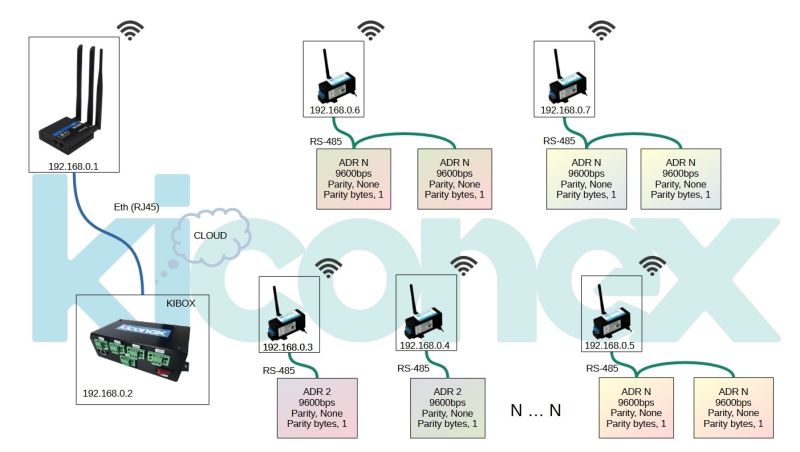Diferencia entre revisiones de «Translations:KiWi/2/en»
De wiki.kiconex
Sin resumen de edición |
Sin resumen de edición |
||
| Línea 3: | Línea 3: | ||
[[Archivo:SP - ESQUEMA RS-485 SIMPLE.jpg|centro|miniaturadeimagen|800x800px|Simple RS-485 schematic]] | [[Archivo:SP - ESQUEMA RS-485 SIMPLE.jpg|centro|miniaturadeimagen|800x800px|Simple RS-485 schematic]] | ||
Example of an installation via Modbus RTU using the ''KiWi:''' | Example of an installation via Modbus RTU using the ''KiWi:''' | ||
[[Archivo:SP - ESQUEMA CONEXIONES KIWI.jpg|centro|miniaturadeimagen|800x800px| | [[Archivo:SP - ESQUEMA CONEXIONES KIWI.jpg|centro|miniaturadeimagen|800x800px|kiWi wiring diagram]] | ||
It should be noted that in a ''kiWi'' up to a maximum of two equipments can be connected and the conditions that must be met are: | It should be noted that in a ''kiWi'' up to a maximum of two equipments can be connected and the conditions that must be met are: | ||
Revisión del 10:26 22 mar 2024
The KiWi solution allows to transform the modbus RTU communication to a wireless modbus TCP/IP connection. In this way, the local WiFi network of the facility can be used to connect the different control-devices. In addition, since the KiWi device also has an RJ45 port, it can also be connected to the local Ethernet network via Ethernet cable through the RJ45 connector. Example of a conventional installation with Modbus RTU communication:

Example of an installation via Modbus RTU using the KiWi:'

It should be noted that in a kiWi up to a maximum of two equipments can be connected and the conditions that must be met are:
